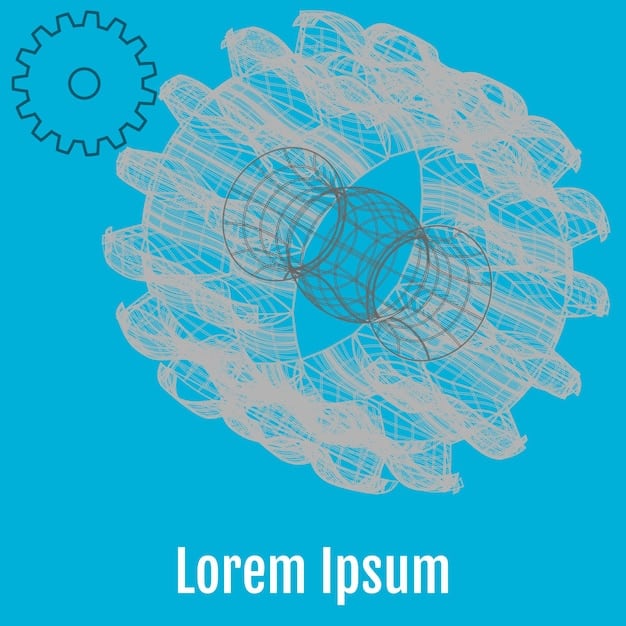Managing Ethical Dilemmas: A Framework for Ethical Decision-Making

Managing ethical dilemmas involves applying a structured framework to navigate complex situations, ensuring decisions align with moral principles and organizational values, ultimately fostering a culture of integrity and trust.
Navigating the complexities of the modern business world often involves facing tough choices. When faced with situations where ethical principles clash, **managing ethical dilemmas** becomes critical for maintaining integrity and fostering a trustworthy organizational environment.
Understanding Ethical Dilemmas
Ethical dilemmas are at the heart of difficult decisions that require individuals or organizations to choose between conflicting moral principles. These situations often lack clear-cut solutions, making it essential to have a structured approach to navigate their complexity.
Understanding the nature of ethical dilemmas involves recognizing that there’s no single ‘right’ answer. The goal is to find a course of action that minimizes harm and aligns with core ethical values.
Defining Ethical Dilemmas
An ethical dilemma arises when an individual or organization faces a situation where upholding one ethical principle means potentially violating another. These dilemmas are often characterized by uncertainty, conflicting values, and potential negative consequences for all stakeholders.
Common Types of Ethical Dilemmas in Business
- Conflict of Interest: Occurs when personal interests interfere with professional responsibilities.
- Confidentiality Breaches: Involve the unauthorized disclosure of sensitive information.
- Discrimination: Unfair treatment based on protected characteristics.
- Use of Company Resources: Misusing company assets for personal gain.
Addressing these dilemmas requires a systematic approach, ensuring fairness, transparency, and accountability. Ignoring these can lead to damaged reputations and erosion of trust.

A Framework for Ethical Decision-Making
Developing a clear, structured framework is vital for anyone facing ethical dilemmas. Such a framework provides a roadmap for evaluating options and choosing the most ethical course of action under pressure.
This section outlines a step-by-step framework designed to help you navigate complex ethical challenges thoughtfully and effectively.
Step 1: Identify the Ethical Problem
The initial step involves recognizing and clearly defining the ethical issue. This requires careful examination of the situation and identifying the conflicting values or principles at stake.
Step 2: Gather Relevant Information
Collect all the necessary facts, including the perspectives of all stakeholders. Accurate information is crucial for making informed decisions.
Step 3: Evaluate Different Courses of Action
- Consider all possible options and their potential consequences.
- Assess each option based on ethical principles and values.
- Consult with trusted colleagues or advisors for different perspectives.
By following these steps, you can ensure a thorough and ethical decision-making process, leading to the best possible outcome.
Ethical Theories and Their Application
Ethical theories provide a foundation for understanding and resolving ethical dilemmas. Applying these theories can help you evaluate different courses of action and make decisions aligned with established moral principles.
Understanding different ethical perspectives allows for a more nuanced approach to decision-making in complex situations.
Utilitarianism
Utilitarianism focuses on maximizing overall happiness and minimizing harm. In practical terms, it involves choosing the option that benefits the greatest number of people.
Deontology
Deontology emphasizes duty and adherence to moral rules or principles. It involves acting in accordance with universal ethical standards, regardless of the consequences.
Virtue Ethics
Virtue ethics focuses on developing moral character and acting in accordance with virtues such as honesty, fairness, and compassion. It involves making decisions that reflect these virtues.

The Role of Corporate Culture
Corporate culture plays a pivotal role in shaping ethical behavior within an organization. A culture that prioritizes ethics fosters trust, encourages transparency, and supports employees in making ethical decisions.
This section explores how to cultivate a corporate culture that promotes ethical conduct and mitigates the risk of ethical breaches.
Creating an Ethical Code of Conduct
A well-defined code of conduct provides clear guidelines for ethical behavior. It outlines the organization’s values, expectations, and standards, serving as a reference point for employees facing ethical dilemmas.
Implementing Ethical Training Programs
Training programs help employees understand ethical principles and how to apply them in real-world situations. These programs should cover the organization’s code of conduct, ethical decision-making frameworks, and case studies.
Leading by Example
- Leaders must model ethical behavior to set the tone for the entire organization.
- Open communication and feedback channels encourage employees to raise ethical concerns.
- Recognizing and rewarding ethical behavior reinforces the importance of integrity.
A strong ethical culture strengthens an organization’s reputation, improves employee morale, and builds trust with stakeholders.
Challenges in Implementing Ethical Frameworks
Implementing ethical frameworks is not without its challenges. Organizations often face resistance, conflicting priorities, and the complexity of real-world ethical dilemmas.
Addressing these challenges requires proactive measures, continuous evaluation, and a commitment to ethical principles.
Organizational Barriers
Hierarchical structures, pressure to meet targets, and lack of resources can impede ethical decision-making. Overcoming these barriers requires strong leadership and a supportive environment.
Conflicting Interests
Balancing the needs of different stakeholders can be challenging. Ethical frameworks should provide a process for weighing competing interests and making fair decisions.
Cultural Differences
In global organizations, cultural differences can lead to varying interpretations of ethical standards. It’s important to establish a baseline of ethical principles that apply across all regions.
By acknowledging and addressing these challenges, organizations can create more effective ethical frameworks that promote integrity and responsible behavior.
Case Studies: Real-World Ethical Dilemmas
Examining real-world case studies provides valuable insights into the complexities of ethical decision-making. These examples illustrate how ethical frameworks can be applied in practice and the potential consequences of both ethical and unethical behavior.
Analyzing these cases can help you develop your ethical reasoning skills and better prepare for future challenges.
Case Study 1: The Pharmaceutical Company
A pharmaceutical company discovers that a life-saving drug has severe side effects. The company must decide whether to continue selling the drug, potentially harming patients, or withdraw it from the market, potentially saving lives but impacting profits.
Case Study 2: The Tech Startup
A tech startup faces pressure to meet aggressive growth targets. To achieve these goals, the company considers using deceptive advertising practices. The decision involves balancing the need for growth with the ethical implications of misleading customers.
Case Study 3: The Financial Institution
A financial institution uncovers evidence of fraudulent activity by a senior executive. The company must decide whether to report the misconduct, risking reputational damage, or conceal it to protect the executive and maintain stability.
By learning from these case studies, individuals and organizations can improve their ability to navigate ethical dilemmas and promote responsible conduct.
| Key Element | Brief Description |
|---|---|
| 🤔 Identifying Dilemmas | Recognize conflicting ethical principles. |
| ⚖️ Ethical Theories | Apply theories like Utilitarianism and Deontology. |
| 🏢 Corporate Culture | Foster an environment that values ethics. |
| 🚀 Implementation | Overcome barriers and conflicting interests. |
Frequently Asked Questions
▼
An ethical dilemma is a situation where you must choose between conflicting moral principles. No matter what you choose, something will be compromised, making it a difficult decision.
▼
A framework provides a structured approach to resolving ethical dilemmas. It ensures transparency, fairness, and consistency in decision-making, helping to minimize negative consequences.
▼
Corporate culture dramatically affects ethical behavior. A culture valuing integrity encourages employees to make ethical decisions, whereas a weak one can enable poor choices.
▼
Utilitarianism focuses on outcomes, aiming to maximize overall happiness. Deontology focuses on moral rules, adhering to principles regardless of consequences.
▼
Challenges include organizational barriers, conflicting interests, and cultural differences. These require strong leadership and proactive measures to overcome.
Conclusion
Effectively **managing ethical dilemmas** requires a combination of structured frameworks, ethical awareness, and a supportive corporate culture. By implementing these strategies, organizations can foster integrity, build trust, and make responsible decisions that benefit all stakeholders.





